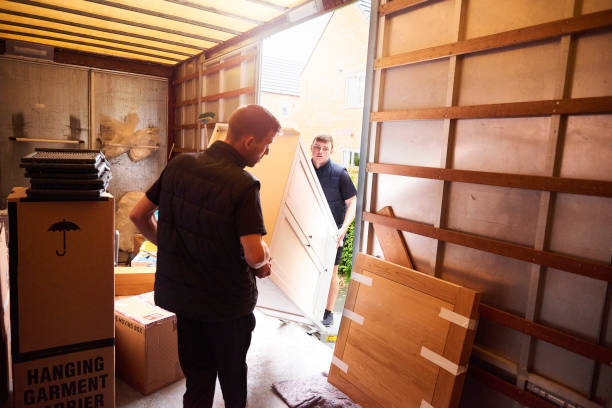In the dynamic world of business, change is inevitable. Whether it’s expanding into a new market, upgrading to a larger space, or downsizing operations, commercial moves are a crucial aspect of organizational growth and adaptation. However, orchestrating a successful commercial move requires meticulous planning, effective communication, and strategic decision-making. From selecting the right location to managing logistics, there are several key considerations to keep in mind to ensure a seamless transition and minimize disruption to business operations.
1. Strategic Planning
The foundation of any successful commercial move lies in strategic planning. Begin by clearly defining the objectives of the move and establishing a timeline for execution. Consider factors such as the size of the new space, proximity to suppliers and customers, and potential for future expansion. Conduct a thorough cost-benefit analysis to assess the financial implications of the move and determine the budget allocation.
2. Professional Movers
Engaging the services of professional movers like Gorilla Movers can significantly streamline the commercial relocation process and alleviate logistical challenges. Research and select reputable moving companies with experience in commercial moves. Request quotes and compare services to ensure they align with the organization’s needs and budget. Professional movers can assist with packing, loading, transportation, and unpacking, allowing employees to focus on their core responsibilities during the transition.
3. Facility Assessment
Before finalizing the move, conduct a comprehensive assessment of the new facility to ensure it meets the operational requirements of the business. Evaluate the layout, infrastructure, and amenities to determine if any modifications or upgrades are necessary. Consider factors such as parking availability, security measures, and compliance with building codes and regulations. Engage with contractors and vendors to obtain estimates for renovation or customization work.
4. Technology Infrastructure
Technology plays a critical role in modern business operations, and a commercial move presents an opportunity to upgrade and optimize existing infrastructure. Assess the technology needs of the organization, including internet connectivity, telecommunications, and data storage. Develop a plan for migrating IT systems, ensuring minimal downtime and data loss. Collaborate with IT professionals to oversee the installation and configuration of hardware and software.
5. Logistics Management
Effective logistics management is essential for coordinating the various aspects of a commercial move. Develop a detailed logistics plan that outlines tasks, responsibilities, and timelines. Coordinate with vendors, suppliers, and service providers to ensure seamless coordination of deliveries, installations, and other logistical activities. Anticipate potential challenges such as transportation delays, equipment malfunctions, and inclement weather, and have contingency plans in place.
6. Employee Engagement
A successful commercial move requires the support and cooperation of employees at all levels of the organization. Keep employees informed and engaged throughout the relocation process, providing regular updates and opportunities for feedback. Communicate the reasons behind the move and the potential benefits for the company and its employees. Provide resources and support to assist employees with the transition, such as relocation assistance, training programs, and flexible work arrangements.
7. Branding and Marketing
A commercial move presents an opportunity to rebrand and promote the organization’s identity and values. Develop a comprehensive branding and marketing strategy to announce the move to stakeholders, customers, and the community. Utilize various channels such as social media, press releases, and advertising to generate buzz and excitement around the relocation. Incorporate the new location into the organization’s branding materials, signage, and promotional campaigns.
8. Compliance and Legal Considerations
Navigating the legal and regulatory landscape is essential to ensure compliance and mitigate risk during a commercial move. Research local zoning laws, permits, and licensing requirements applicable to the new location. Review lease agreements, contracts, and insurance policies to ensure they are updated and aligned with the relocation plans. Seek legal counsel to address any potential liabilities or disputes related to the move.
9. Environmental Sustainability
As businesses increasingly prioritize environmental sustainability, incorporating green practices into a commercial move can enhance the organization’s reputation and reduce its carbon footprint. Explore opportunities to minimize waste, conserve resources, and promote energy efficiency throughout the relocation process. Consider options such as recycling, using eco-friendly materials, and implementing alternative transportation methods for moving supplies and equipment.
10. Post-Commercial Move Evaluation
Once the commercial move is complete, take the time to evaluate its success and identify areas for improvement. Solicit feedback from employees, customers, and other stakeholders to assess their satisfaction with the new location and the relocation process. Measure key performance indicators such as productivity, revenue, and customer satisfaction to gauge the impact of the move on the business. Use this feedback to refine future relocation strategies and continuously improve organizational processes.
Conclusion
Successful commercial moves require careful planning, strategic decision-making, and effective execution. By considering the key factors outlined above, businesses can minimize disruption, optimize operations, and position themselves for long-term success in their new location. With proper planning and coordination, a commercial move can be a transformative opportunity for growth and innovation.

